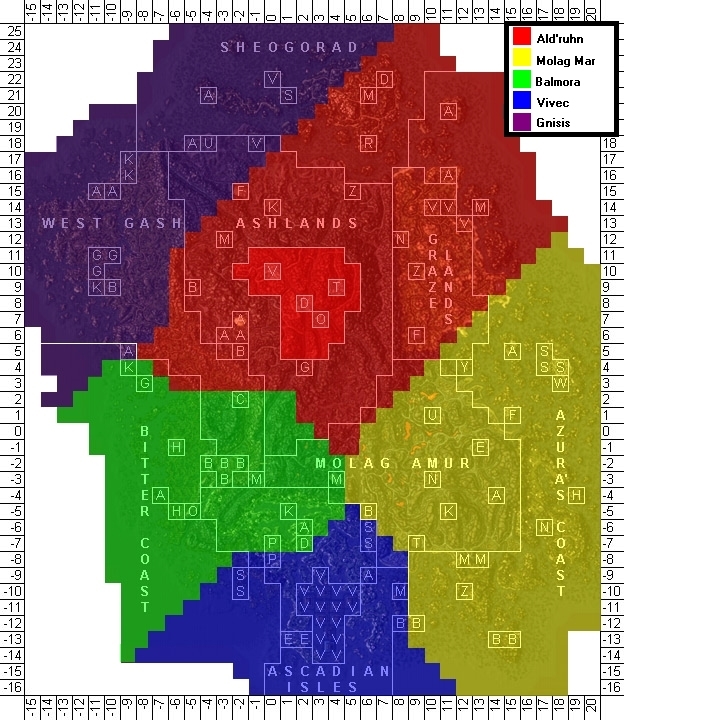Developed as an aid to Tamriel Rebuilt playthroughs, this tool generates maps for where you teleport to when casting Almsivi Intervention and Divine Intervention. Though these types of maps exist for the base, I couldn't find any that took into account the many new Temples and Shrines added by Tamriel Rebuilt. From there, I realized I should make a generator that could support any configuration of mods, including OpenMW.
Scroll up, click on the generated_maps folder, and download the images you want as reference for your TR playthrough. The filenames are long, but they describe the exact combo of mods used on that map (this is also printed on the top left of the map in case you rename it). I personally like to have Improved Temple Experience installed, which just adds Almsivi Intervention to Ghostgate, Suran, and Maar Gan (and Vos, but TR also adds it to Vos).
THESE MAPS ARE NOT YET 100% PERFECT. Why?
The short answer is this is exceedingly tedious to verify in-game, as you would need to cast Intervention from every cell, with every combination of mods.
The long answer is that the base game calculates Interventions on a per-cell basis, and calculates distance based on the number of cells needed to traverse from the start point to the end point. This leads to a bunch of ties, and I haven't quite figured out what priority scheme it uses to resolve those ties. This accounts for small differences between my maps and the canonical ones on Vvardenfell (specifically, Divine Intervention from cell [9,2] taking you to Pelagiad in the base game). I'm working on it.
The shortest answer is that you should use OpenMW. I'm much more confident in the OpenMW maps because OpenMW uses continuous pythagorean distances to calculate the closest node. It also supports the Mournhold nodes, I think.
Clone the repository, then in main.py change mod_list = [....] to your set of mods, picking from the supported mod_options list. Run the program to generate the two maps for your configuration in the generated_maps folder.
Running this looks like typing python main.py into the command line. You will need to install a few python packages (it will ask for them why you try to run it) by typing python -m pip install opencv-python (with opencv-python replaced by whatever other packages you are missing).
To add in new Intervention points, look at coord.json and edit it by hand. notes.txt has a bit of guidance on using the Creation Set to list all of them for you with the exact cells.
If you want to change the area highlighted for current TR releases, you can run release_clicker.py. Controls are left click to add a cell to the release area, right click to remove it, middle button to add every displayed cell, and esc to move to the next map. This updates the (raw) list of cells in release_lookup_list.json, so you could also just edit this by hand.
Maps are spliced together using current and future versions of the TR map, using hack_maps.py. Kudos to @Taniquetil for incredibly consistent map style that I could just use opencv to splice them as rectangles and not have to muck around in photoshop.
opencv-python(imports as cv2, but you need to pip install as opencv-python)numpyscipydistinctipy


